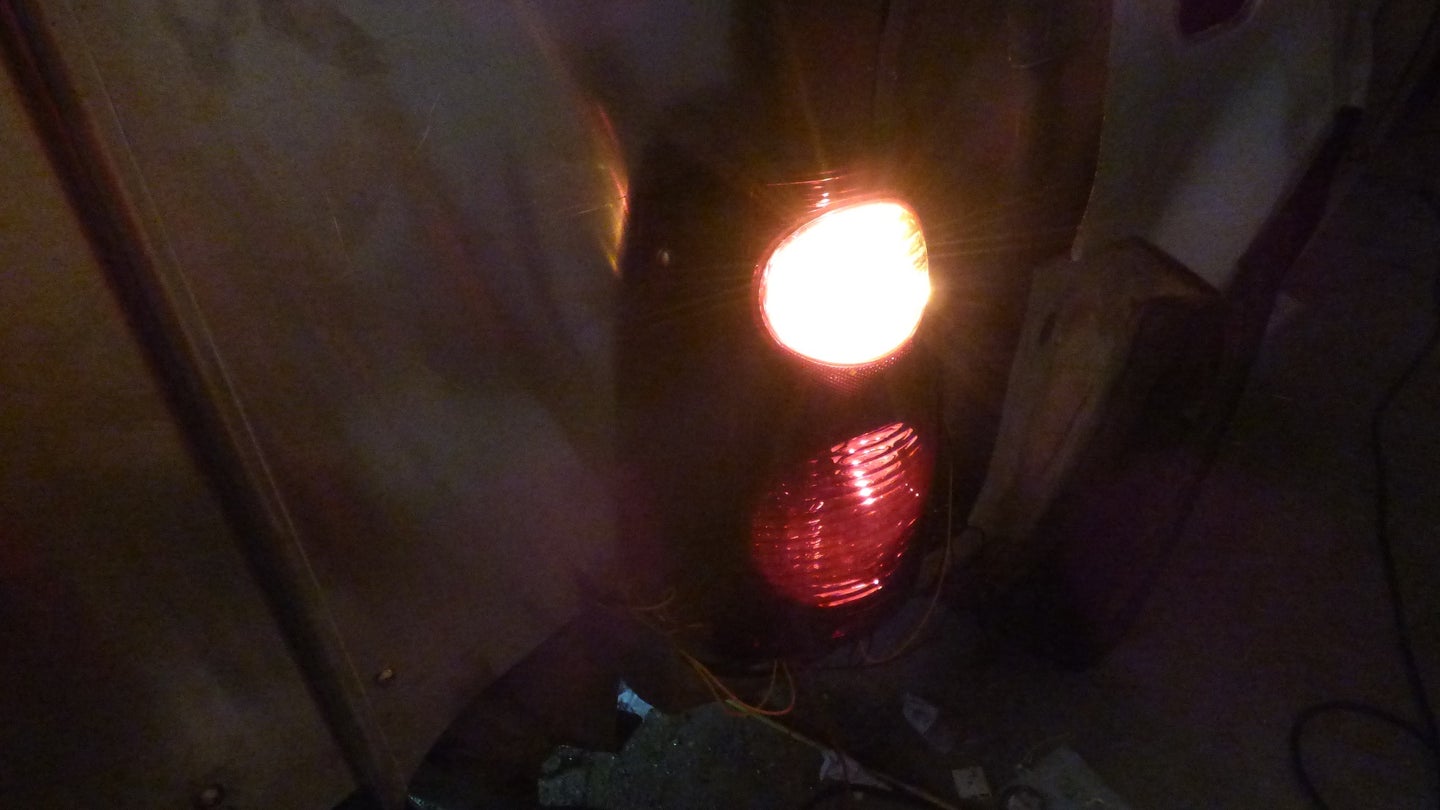VW Jetta Smyth Ute Conversion: Let There Be Lights
Before the bodywork goes on, it’s time to wire up the new rear lighting.

With the bed construction complete, a few small tasks remained before moving on to the fiberglass bodywork. Now was the time to wire up the new tail lights. Being a pickup truck, it also needs to be able to tow stuff, so now was a good time to install a trailer hitch, as well as trailer light wiring while I was hooking up the tail lights.
The hitch itself is a standard design by Curt, which bolts to the factory tow hook and through new holes drilled into the spare tire well. Considering what I'd already done to this car, I didn't mind drilling a few new holes. Installation was very straightforward with the provided hardware. I used my floor jack to hold it in position while I marked and drilled the holes, then bolted it into place. The new bed extends further rearward than the original body, so I needed an extension to bring the receiver out to the rear of the Ute. I did this in the form of a 1.25 inch to 2 inch adapter. This also means that we can use all of the existing hardware we already have for our Ford Flex with the Jetta. Don't worry, there is no way the Jetta can tow anywhere near as much as the Flex, and we won't even try. But it will be able to tow our 5x8 foot ramp trailer just fine, as well as any building materials, motorcycles, and such that won't fit in the bed of the Ute.
Trailers also need wiring for their lights. For that matter, so did the entire rear of the Ute, since we removed all of the original bodywork and lighting. Smyth Performance provides a pair of tail lights originally intended for a Ford Explorer Sportrac - appropriately, the ute version of the Ford Explorer with a small bed instead of the standard hatch area. They also provide all of the necessary sockets and bulbs, and the build manual even tells you which wires in the Jetta are for what functions.
Originally I intended to get fancy and run the new tail lights off of the trailer light converter. The Jetta has separate brake and turn signal lights, while trailers, and the Explorer Sportrac, combine these functions into one bulb. By tapping into the wiring after the converter, I planned to make the lights work they way they did on the original Explorer rather than the Jetta. But I kept running into problems where the lights wouldn't work for some reason, so I decided to abandon this idea and go with Smyth's recommended method. The red lens remains the brake and running light. An amber bulb replaces the clear one for the reverse lights, turning the housing into an amber turn signal. Smyth provides a pair of small white LEDs that go into new holes drilled into the clear lens, making it serve double duty for turn and reverse lights. This method worked perfectly and was simple matter of matching up the wiring from the car to the correct wires on the sockets. I admit I'm not very good with electrical work, but even though Smyth's method seemed more complicated than using the trailer light converter, it was actually much easier. I also installed two more small white LEDs into the fiberglass roll pan to illuminate the license plate, and ran a wire into the passenger compartment to power the third brake light after I install the rear window surround.
All that remains is to tidy and secure the new wiring into place. Then it's time to start the bodywork, which involves placing and attaching the large fiberglass body panels. Once that's done, the Ute will be back on the road in its new form.
